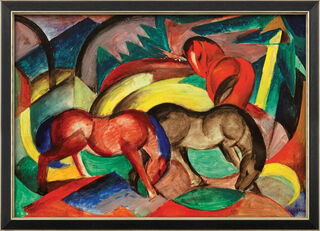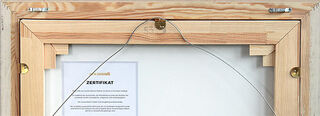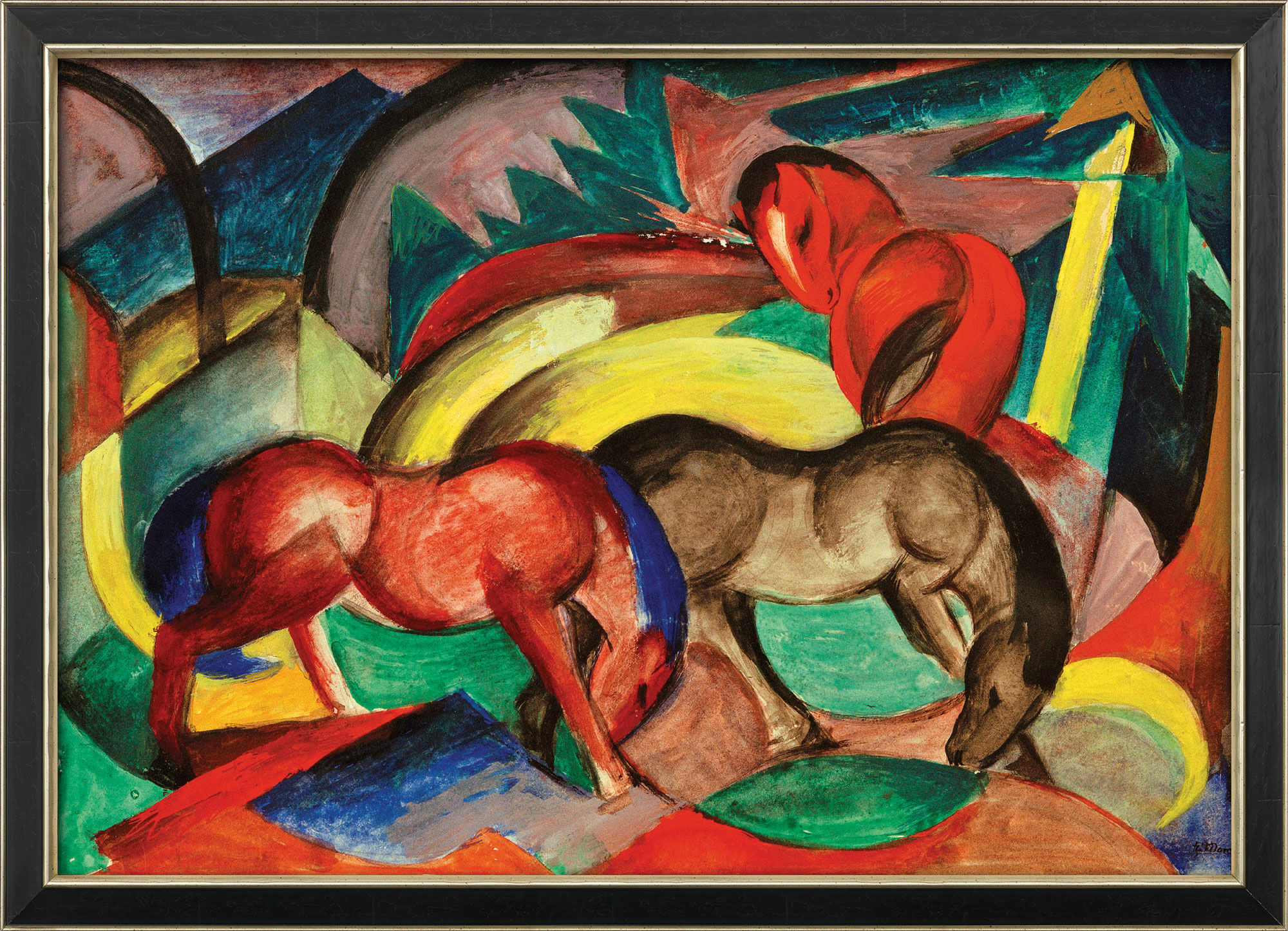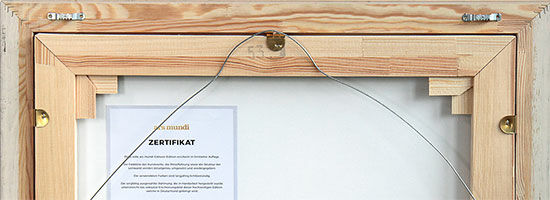Picture "Three Horses" (1912), framed


Picture "Three Horses" (1912), framed
Quick info
ars mundi Exclusive Edition | limited, 499 copies | numbered certificate | reproduction, Giclée print on canvas | on stretcher frame | framed | size 52 x 72 cm (h/w)
Detailed description
Picture "Three Horses" (1912), framed
He was particularly fascinated by animals. Franz Marc not only studied their anatomy in great detail as an artist, but he also knew a lot about their behaviour and gestures. And so animal motifs can be found throughout his artistic oeuvre, especially the depiction of horses. There are numerous drawings, the famous small sculpture "Two Horses" from 1908/1909 - and, of course, works that later became almost iconic, such as his "Blue Horse" from 1911.
The three horses from 1912 show Marc's understanding of nature and art particularly clearly: they virtually merge with the surrounding nature. The colours and forms of animal and landscape merge into a harmonious whole, that was for Marc nothing less than the universal unity of the world.
Original: mixed media, privately owned. The original was auctioned at Christie's in London in 2018 for the equivalent of 17.5 million euros. This is the highest auction price for a work by Franz Marc at the time.
Authentic reproduction using the Fine Art Giclée process directly on 100% cotton artist's canvas, mounted on a stretcher frame. Limited edition of 499 copies, with a numbered certificate on the back. In solid wood frame. Size 52 x 72 cm (h/w). ars mundi Exclusive Edition.
Frame configurator
Customised picture frame

Frame configurator
Customised picture frame






Customer reviews
Frame variant: framed
Vielen Dank für diese wunderbare Arbeit.
Frame variant: framed
habe mich sehr über dieses schöne Bild gefreut
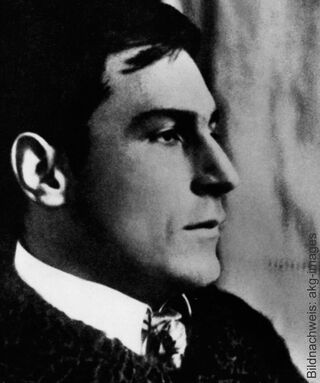
About Franz Marc
1880-1916
Franz Marc's unique talent was recognised and encouraged at the Munich Academy. On several trips to Paris, he discovered the works of van Gogh for the first time, which made a significant impression on him and helped him to develop an independent artistic language. Through his friend August Macke, he met Wassily Kandinsky, Gabriele Münter and Alfred Kubin, with whom he founded the Expressionist artists' association "Der Blaue Reiter" in 1911. At the outbreak of World War I, Marc was drafted into military service and died two years later in the Battle of Verdun.
Marc examined Naturalism, Art Nouveau and French Impressionism, but sought a new language of expression in order to be able to depict "the spiritual essence of things". With unprecedented consistency, he approached a new form of art in which colours acquired a symbolic meaning far beyond naturalistic representation: "Every colour must clearly say who and what it is, and must be set on clear shapes", Marc explained. For him, blue is the colour of the spiritual, red is love, passion and vulnerability, yellow is the sun and femininity.
Animal, in particular, were the focus of his painting, as they, in contrast to people, symbolised originality and purity to him. Just like Kandinsky, he sought the renewal of the spiritual in art.
The German artists‘ association "Der Blaue Reiter" ("The Blue Rider") was founded in Munich in 1911 by Wassily Kandinsky and Franz Marc during the German Expressionist period.
The name was originally the title of the painting by Kandinsky and also the title of the almanac published by Kandinsky and Marc. Members included Paul Klee and August Macke. The group criticised the prevailing art canon as too academic and elitist and demanded more openness and diversity. The artists turned away from realism and began to paint expressively in an increasingly abstract style using strong colours.
The group disbanded at the beginning of World War I.
Graphic or sculpture edition that was initiated by ars mundi and is available only at ars mundi or at distribution partners licensed by ars mundi.
Artistic movement that replaced Impressionism in the early 20th century.
Expressionism is the German form of the art revolution in painting, graphic art and sculpture, which found its precursor in the works of Paul Cézanne, Vincent van Gogh and Paul Gauguin in the late 19th century. The Expressionists attempted to advance to the primal elements of painting. With vibrant, unbroken colours in large areas and with the emphasis on the line and the resulting targeted suggestive expressiveness, they fought against the artistic taste established by the bourgeoisie.
The most important representatives of Expressionism were the founders of "Die Brücke" (The Bridge): Ernst Ludwig Kirchner, Erich Heckel, Karl Schmidt-Rottluff, Max Pechstein, Otto Mueller and Franz Marc, August Macke and others.
Masters of Viennese Expressionism are Egon Schiele and Oskar Kokoschka. Among the sculptors, Ernst Barlach is the most famous.
Fauvism is the French form of Expressionism.
Giclée = derived from the French verb gicler "to squirt, spurt".
The giclée method is a digital printing process. It is a high-resolution, large-format printout on an inkjet printer with special different-coloured dye- or pigment-based inks (usually six to twelve). The colours are fade-proof, i.e. resistant to harmful UV light. They have a high richness of nuance, contrast and saturation.
The giclée process is suitable for art canvases, handmade and watercolour paper as well as for silk.

